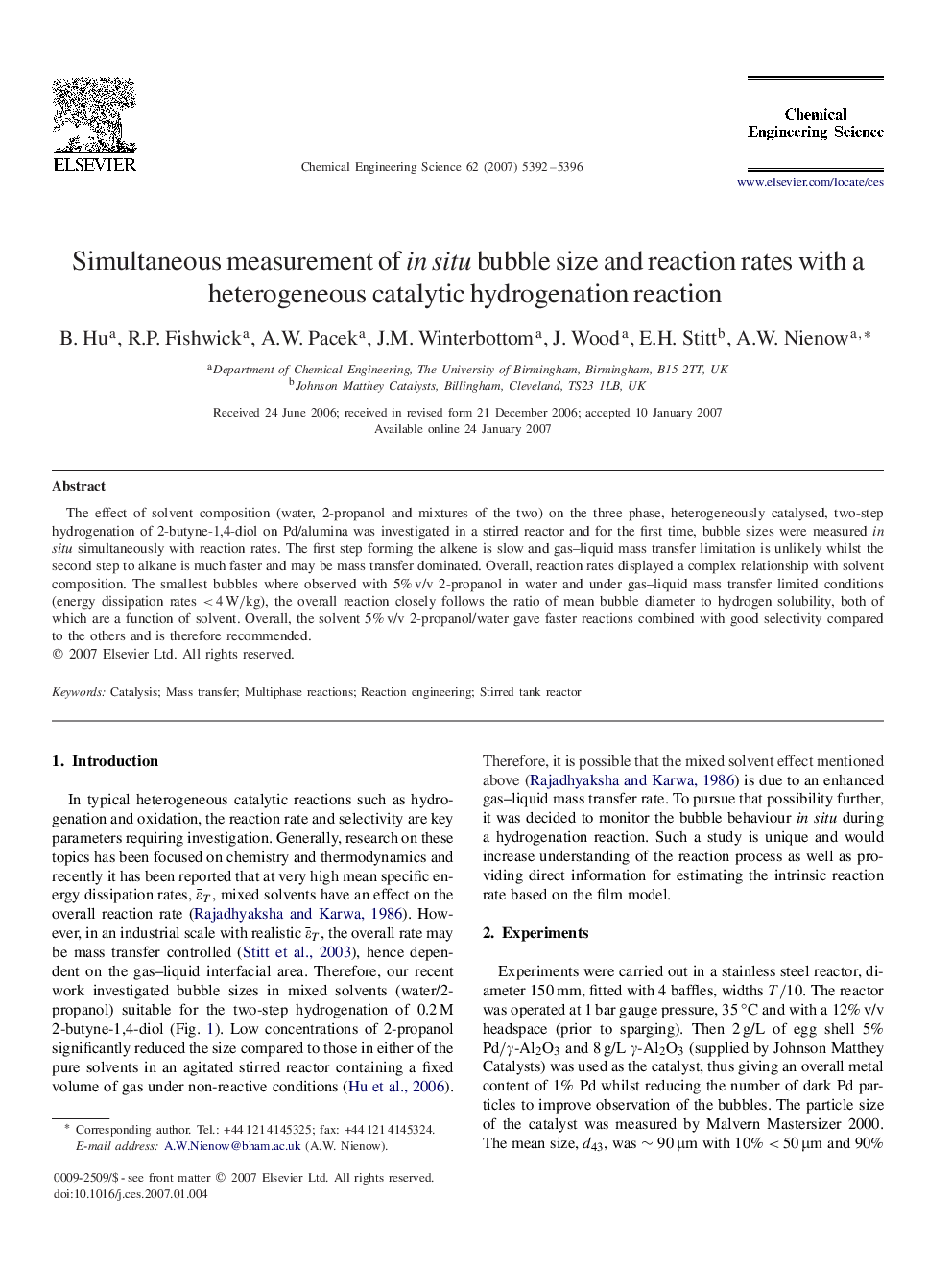| کد مقاله | کد نشریه | سال انتشار | مقاله انگلیسی | نسخه تمام متن |
|---|---|---|---|---|
| 158881 | 457019 | 2007 | 5 صفحه PDF | دانلود رایگان |

The effect of solvent composition (water, 2-propanol and mixtures of the two) on the three phase, heterogeneously catalysed, two-step hydrogenation of 2-butyne-1,4-diol on Pd/alumina was investigated in a stirred reactor and for the first time, bubble sizes were measured in situ simultaneously with reaction rates. The first step forming the alkene is slow and gas–liquid mass transfer limitation is unlikely whilst the second step to alkane is much faster and may be mass transfer dominated. Overall, reaction rates displayed a complex relationship with solvent composition. The smallest bubbles where observed with 5% v/v 2-propanol in water and under gas–liquid mass transfer limited conditions (energy dissipation rates <4W/kg), the overall reaction closely follows the ratio of mean bubble diameter to hydrogen solubility, both of which are a function of solvent. Overall, the solvent 5% v/v 2-propanol/water gave faster reactions combined with good selectivity compared to the others and is therefore recommended.
Journal: Chemical Engineering Science - Volume 62, Issues 18–20, September–October 2007, Pages 5392–5396